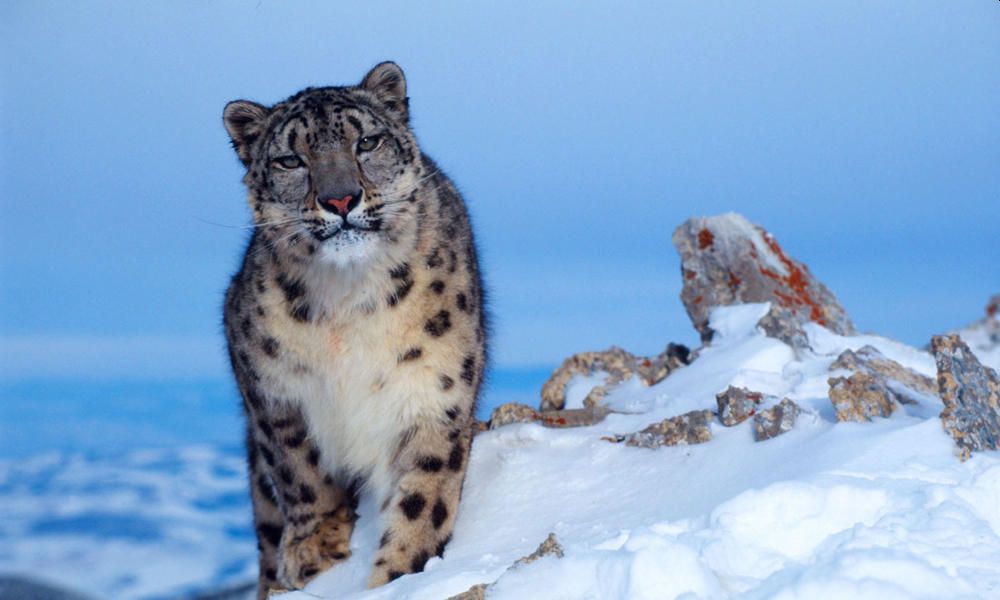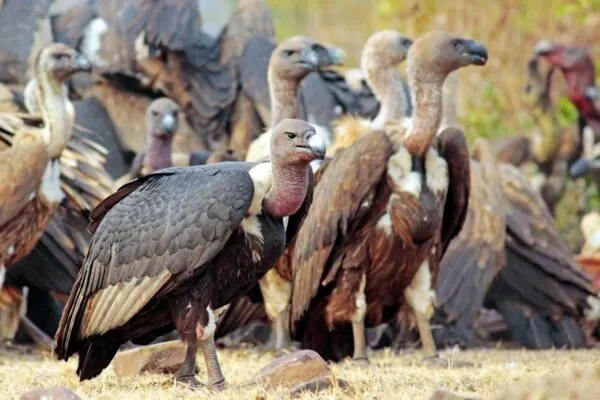73 Endangered Snow Leopards Live in Himachal Pradesh, Finds a Survey
Elusive by nature, gorgeous by appearances – snow leopard is a large cat native to the mountains of Central and South Asia. The animal is listed as vulnerable on the IUCN Red List as the global population has dwindled down to less than 10,000 individuals and is feared to decline further 10 percent by 2040. To the joy of conservationists, a recent survey has found that there are an estimated 73 snow leopards in Himachal Pradesh.
Snow leopards live in several Himalayan states of India but a scientific estimate of their population has never been made before anywhere in the subcontinent given the animal lives in remote, high-altitude regions. The species is threatened by poaching and habitat destruction by various anthropogenic activities.

A survey reveals that an estimated 73 snow leopards live in Himachal Pradesh | Image: Klein and Hubert WWF
After the Union Ministry of Environment, Forests, and Climate Change set the Snow Leopard Population Assessment in India protocols, Himachal’s wildlife wing collaborated with the Nature Conservation Foundation Mysore to assess the population of snow leopards in the state. The information was shared by the state forest minister Rakesh Pathania.
He said,
Another revelation from the study is that a bulk of snow leopard occurrence is outside the protected areas, reiterating the fact that local communities are the strongest allies for conservation in snow leopard landscapes. The assessment will serve as a robust baseline for the wildlife wing for long-term monitoring of the snow leopard landscape.
With Himachal Pradesh becoming the first state to complete the survey, a similar survey is underway in several states and Union territories, including Uttarakhand, Jammu and Kashmir, Sikkim, and Arunachal Pradesh.
According to Pathania, the first of its kind assessment has revealed that snow leopard population density in the state varies between 0.08 to 0.37 individuals per 100 square kilometres, with the trans-Himalayan regions of Spiti, Pin Valley, and upper Kinnaur observing the highest densities of both the predator and its prey (mainly ibex and blue sheep).
Also Read: First Snow Leopard Conservation Center in Gangotri National Park
He further added that the study encompassed the total potential snow leopard habitat of Himachal Pradesh employing a stratified sampling design. Camera trapping surveys were conducted at 10 sites to characteristically illustrate all the loss i.e. high, low, and unknown. The camera trap positioning over the mountainous terrain was led by a team of eight young people from Kibber Village. Apparently, over 70 frontline staff of the forest department was trained in this technique as part of the project.
Snow leopards were detected at all the 10 sites – Bhaga, Chandra, Bharmour, Kullu, Miyar, Pin, Baspa, Tabo, Hangrang, and Spiti – signifying that snow leopard was found in the entire animal habitat in Himachal Pradesh, either as resident individuals of a population or as dispersing individuals navigating through connecting habitats.
Via: The Tribune


